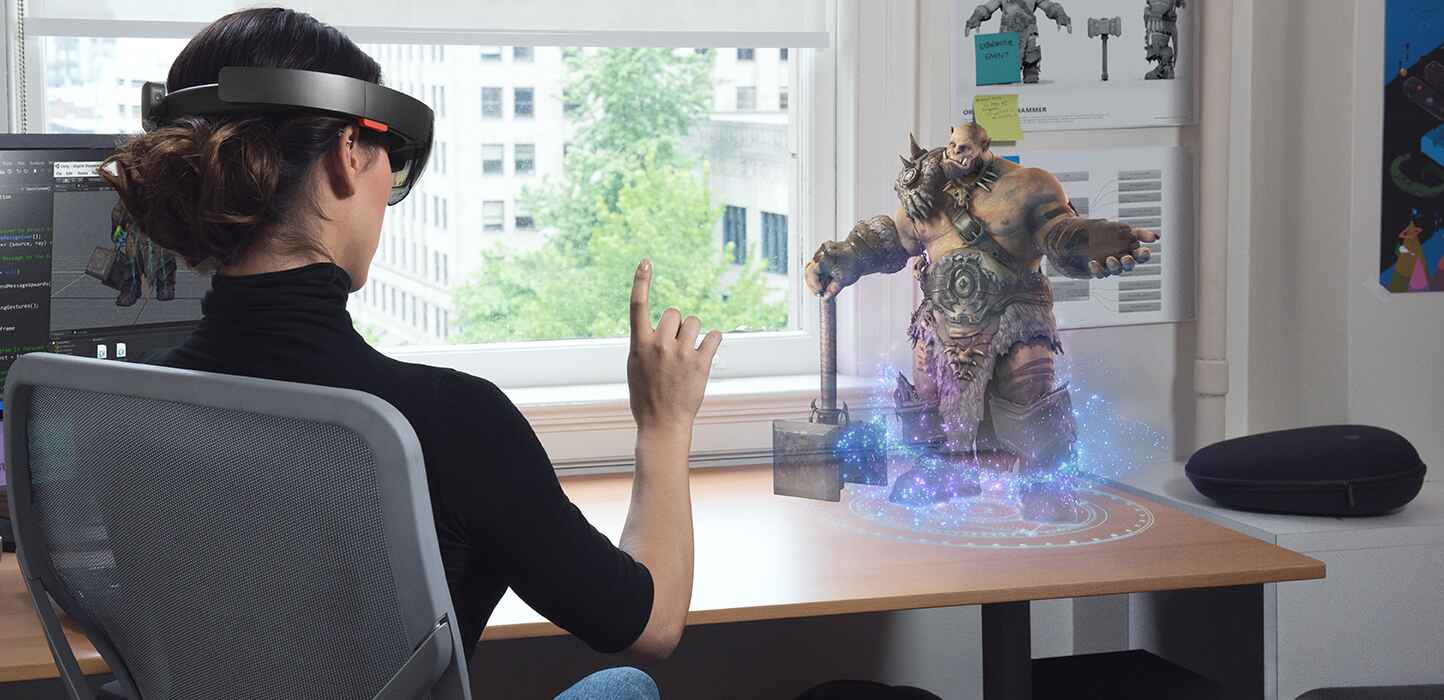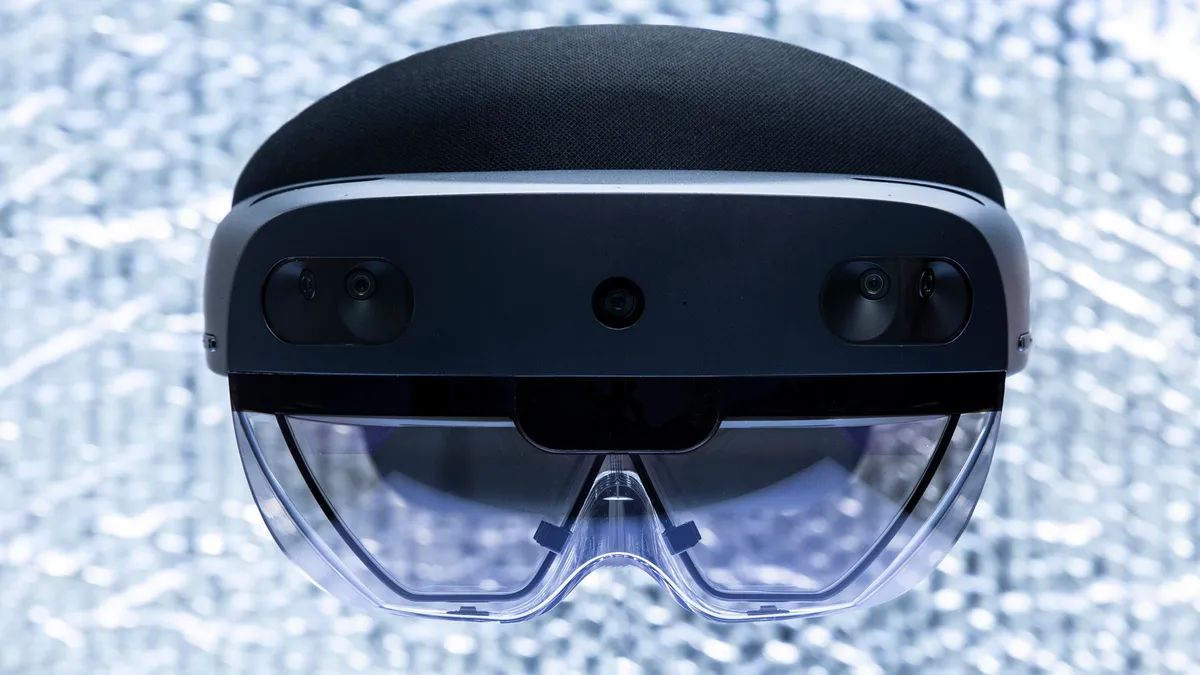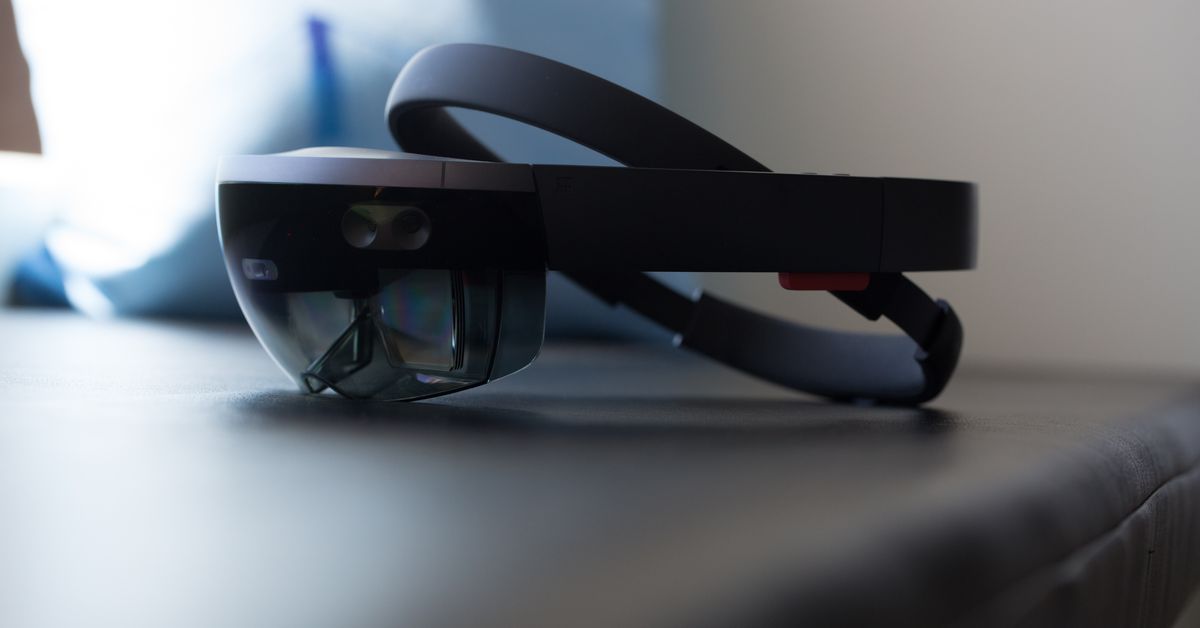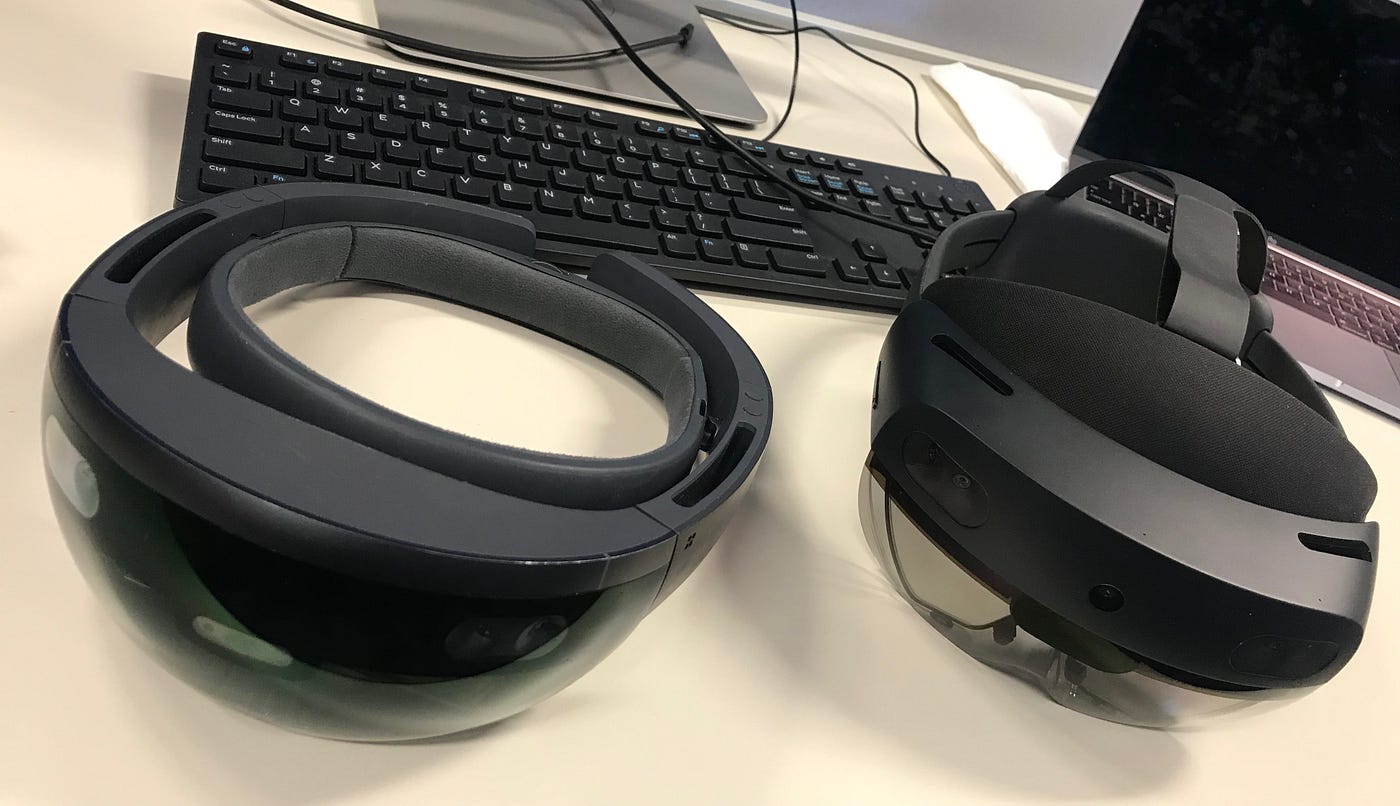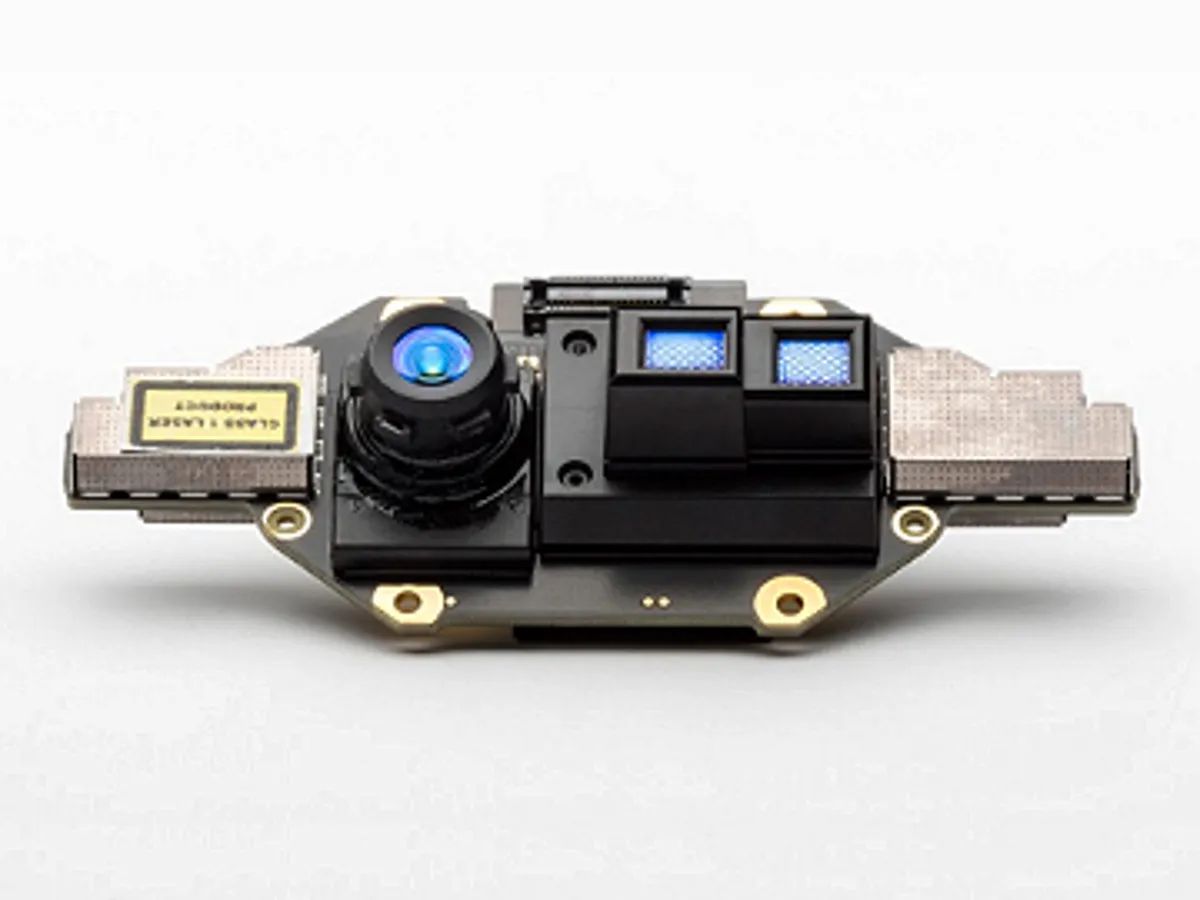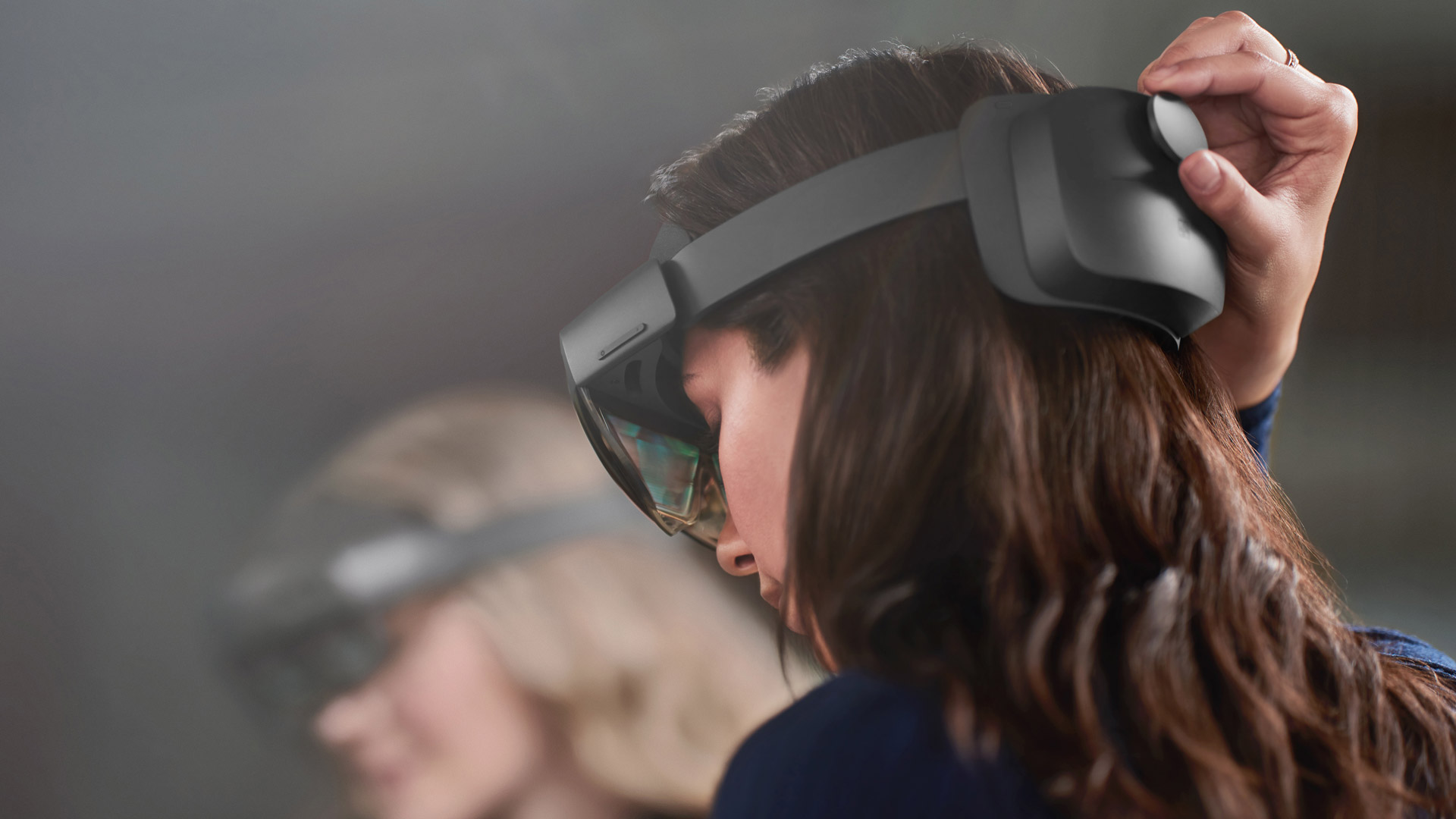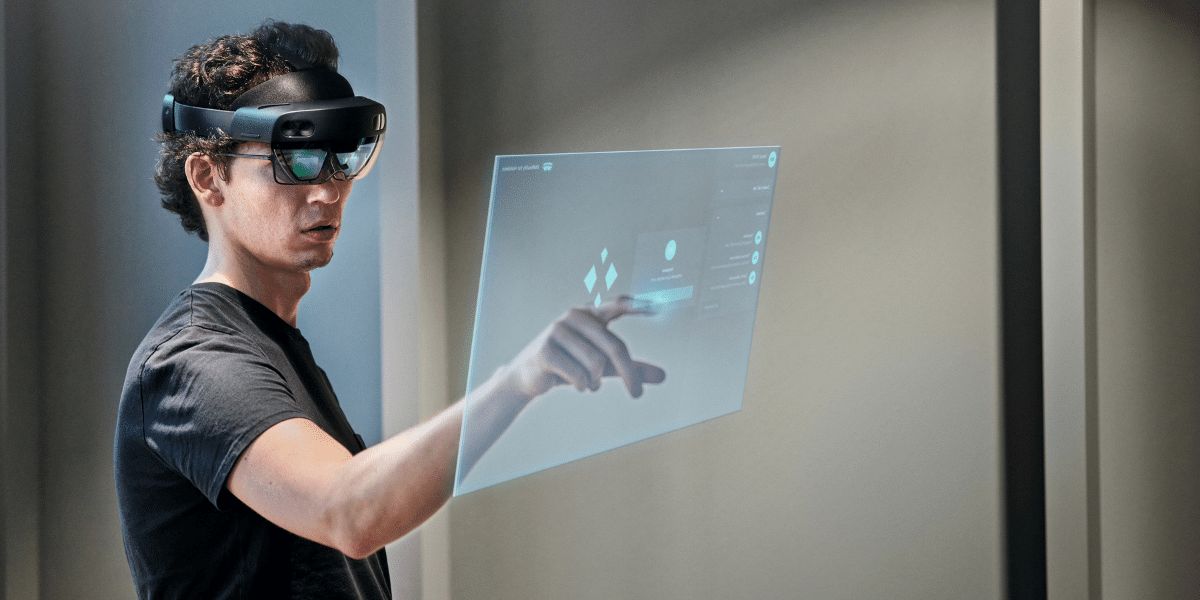Introduction
The modern world of technology continues to push the boundaries of what was once thought impossible. One such technological marvel is Microsoft’s HoloLens, a revolutionary mixed reality headset that allows users to interact with virtual content in the real world. One of the key features of the HoloLens is its ability to track hand movements, allowing for a natural and intuitive user experience.
Hand tracking on the HoloLens opens up a whole new dimension of possibilities for users, enabling them to interact with holograms, manipulate virtual objects, and navigate through digital environments using nothing but their hands. This seamless integration of the virtual and real world has transformed the way we interact with technology and has potential applications in various fields such as gaming, design, education, and more.
Understanding how hand tracking works on the HoloLens requires a deeper look into the technical aspects of the device. From depth sensing technology to gesture recognition and machine learning algorithms, every aspect works in harmony to create a seamless and immersive experience. In this article, we will explore the fascinating world of HoloLens hand tracking, unraveling the technology behind it and shedding light on its capabilities, limitations, and challenges.
So, if you have ever wondered how the HoloLens can track your hand movements and convert them into digital interactions, buckle up and delve into the intricacies of this cutting-edge technology.
Technical Overview of the HoloLens
The HoloLens is a sophisticated piece of technology that combines various sensors and advanced hardware to create its remarkable hand tracking capabilities. At its core, the HoloLens is equipped with a robust depth camera, an IMU (Inertial Measurement Unit), and an array of specialized processors that work in tandem to track the user’s hands in real-time.
The depth camera plays a vital role in capturing the spatial information of the user’s surroundings. It utilizes infrared light to measure the distance between objects and creates a depth map of the environment. This depth map is then used to detect and track the hand movements of the user accurately.
In addition to the depth camera, the HoloLens also incorporates an IMU, which consists of a combination of accelerometers, gyroscopes, and magnetometers. These sensors provide information about the device’s orientation, position, and motion. By combining the data from the depth camera and the IMU, the HoloLens can precisely track the user’s hand movements, even when they are not directly within the field of view.
The processed data from the depth camera and IMU is then fed into a dedicated hand tracking module, consisting of specialized processors optimized for computer vision tasks. This module uses complex algorithms to analyze the depth map, detect and track the user’s hands, and accurately determine their position and movement in three-dimensional space.
Furthermore, the HoloLens incorporates advanced gesture recognition capabilities, allowing users to perform various predefined gestures to interact with virtual content. The gesture recognition system utilizes machine learning algorithms that have been trained to identify and interpret specific hand movements. This enables users to perform actions like pinch, grab, swipe, and more, providing a natural and intuitive user interface.
All these components work seamlessly together to enable the HoloLens to track and interpret hand movements accurately, creating a truly immersive and interactive augmented reality experience. The technical prowess behind the device’s hand tracking capabilities showcases the groundbreaking advancements in computer vision, depth sensing, and machine learning technologies.
With this technical foundation in mind, let’s dive deeper into the basic principles of hand tracking and explore the depth sensing technology that drives this remarkable feature of the HoloLens.
Hand Tracking Basics
Hand tracking on the HoloLens relies on a combination of advanced computer vision techniques, depth sensing technology, and machine learning algorithms. The goal is to accurately capture the movements of the user’s hands and translate them into digital interactions within the mixed reality environment.
At a high level, hand tracking can be broken down into three key processes: hand segmentation, gesture recognition, and skeletal tracking.
Hand segmentation is the process of separating the user’s hands from the background and other objects within the scene. To achieve this, the depth camera captures the depth map of the environment, creating a detailed representation of the distance between the camera and various objects. Based on this depth map, the system can identify the user’s hands as distinct entities and isolate them for further processing.
Once hand segmentation is complete, the HoloLens leverages its gesture recognition capabilities to interpret the movements and gestures made by the user’s hands. This involves mapping hand poses and motions to predefined gestures, allowing users to interact with virtual content using intuitive gestures like grabbing, pinching, and swiping. Machine learning algorithms play a significant role in this process, as they are trained to recognize and categorize specific hand poses and movements.
The final aspect of hand tracking is skeletal tracking, which estimates the positions of various joints in the user’s hands. This information is crucial for accurately representing the user’s hand movements in the virtual environment. By tracking the positions of joints such as the wrist, fingers, and thumb, the HoloLens can create a real-time skeletal model of the user’s hands. This skeletal tracking enables precise tracking of hand movements, allowing for intricate interactions with holograms.
Combined, these processes work together to enable the HoloLens to accurately track the user’s hands and interpret their movements within the mixed reality environment. The seamless integration of hand tracking with other HoloLens features creates a natural and intuitive user interface that enhances the immersive experience.
Now that we have covered the basic principles of hand tracking, we will explore the depth sensing technology behind this remarkable capability in the next section.
Depth Sensing Technology Behind Hand Tracking
The depth sensing technology used in the HoloLens plays a pivotal role in enabling hand tracking. It allows the device to perceive the depth information of the user’s surroundings, which is essential for accurately capturing hand movements within a mixed reality environment.
The HoloLens utilizes an advanced depth camera that incorporates an infrared (IR) emitter and a depth sensor. The IR emitter emits a pattern of infrared light onto the scene, while the depth sensor, also known as a time-of-flight sensor, measures the time it takes for the emitted light to bounce back to the camera. Using this information, the depth camera calculates the distance between the camera and objects in the environment, creating a depth map.
The depth map is a two-dimensional image that represents the distance of each pixel from the camera. With the depth information, the HoloLens can distinguish between various objects and accurately identify the user’s hands within the scene. This separation of the hands from the background is crucial for precise hand tracking.
To further enhance the hand tracking capabilities, the HoloLens also incorporates infrared sensors that capture the reflection pattern of the emitted infrared light on the user’s hands. These reflection patterns help to isolate the hands and distinguish them from other objects by leveraging the unique optical properties of human skin.
All this depth sensing technology allows the HoloLens to create a detailed and accurate representation of the user’s surroundings, enabling real-time hand tracking. It provides the necessary spatial awareness for the device to understand the position, orientation, and movement of the user’s hands within the mixed reality environment.
By harnessing the power of depth sensing technology, the HoloLens is able to bridge the gap between the physical and digital worlds, enabling users to manipulate virtual objects and interact with holograms in a natural and intuitive way.
In the next section, we will delve into the intricacies of gesture recognition and how it enhances the hand tracking experience on the HoloLens.
Gesture Recognition
Gestures play a vital role in human communication, and the HoloLens leverages gesture recognition to enable seamless interaction with virtual content. Through a combination of computer vision techniques and machine learning algorithms, the device can interpret the user’s hand movements and translate them into meaningful digital interactions.
Gesture recognition begins with the detection and tracking of the user’s hands, which we discussed in the previous sections. Once the hand movements are captured, the HoloLens employs machine learning algorithms that have been trained on vast datasets to identify and categorize specific gestures.
These predefined gestures include actions like grabbing, pinching, tapping, swiping, and more. Each gesture is associated with a particular digital interaction, allowing users to manipulate holographic objects, navigate through menus, and perform various actions within the mixed reality environment.
The machine learning algorithms analyze the hand movements and compare them with the patterns and characteristics of known gestures. By matching the observed hand movements with the learned data, the HoloLens can accurately recognize and interpret the user’s gestures in real-time.
Additionally, the HoloLens can detect the intensity of the gestures, which further enhances the user experience. For example, a gentle pinch might be interpreted as a zoom-in gesture, while a stronger pinch could trigger a grab or resize interaction.
Gestures not only provide a natural and intuitive way to interact with virtual content but also offer a more immersive experience. The ability to manipulate holographic objects using familiar hand movements creates a sense of presence and amplifies the feeling of being deeply engaged in the mixed reality environment.
It is worth noting that while the HoloLens comes with predefined gestures, developers have the flexibility to create their own custom gestures for specific applications or experiences. This allows for further personalization and tailoring of the hand tracking capabilities to suit different use cases.
Gesture recognition is a key component of the HoloLens hand tracking system and plays a significant role in ensuring a seamless and immersive mixed reality experience. With precise gesture recognition, users can fully harness the potential of the HoloLens to interact with holographic content and unlock limitless possibilities.
Next, let’s explore the process of hand segmentation and how it contributes to the overall hand tracking on the HoloLens.
Hand Segmentation
Hand segmentation is a critical aspect of the hand tracking system on the HoloLens. It involves isolating the user’s hands from the background and other objects within the scene, allowing for accurate tracking and interpretation of hand movements.
The depth camera in the HoloLens plays a crucial role in hand segmentation by capturing the depth map of the environment. This depth map provides information about the distance between the camera and different objects within the scene. Using this information, the HoloLens can identify and separate the user’s hands as distinct entities.
Hand segmentation algorithms analyze the depth map and distinguish the hands from the rest of the scene based on various factors such as depth, shape, and movement. By comparing the depth values of different pixels in the depth map, the system can differentiate between the user’s hands and other objects.
To enhance the accuracy of hand segmentation, the HoloLens leverages additional infrared sensors that capture the reflection patterns of the infrared light emitted by the device on the user’s hands. This helps to further isolate the hands and differentiate them from other objects.
Once the hands are successfully segmented, they are treated as separate entities and subjected to further processing, such as gesture recognition and skeletal tracking, to enable the user to interact with the mixed reality environment.
Accurate hand segmentation is crucial for the seamless integration of virtual content with the user’s real-world environment. It ensures that the user’s hands are precisely tracked, enabling them to manipulate holographic objects and interact with the digital world in a natural and intuitive manner.
However, it’s worth noting that hand segmentation may sometimes face challenges, especially in complex scenes or when objects occlude the hands. In such cases, the hand tracking system may encounter difficulties in accurately segmenting the user’s hands. Efforts are being made to improve the robustness and reliability of hand segmentation algorithms to overcome these challenges.
Hand segmentation is a fundamental process within the hand tracking system on the HoloLens. It enables the device to accurately identify and track the user’s hands, forming the foundation for immersive and intuitive interactions in the mixed reality environment.
Next, let’s delve into skeletal tracking, the process that enables precise tracking of hand movements and gestures on the HoloLens.
Skeletal Tracking
Skeletal tracking is a crucial component of hand tracking on the HoloLens, enabling precise tracking of the user’s hand movements and gestures. By estimating the positions of various joints in the user’s hands, the device creates a real-time skeletal model that accurately represents the movement and orientation of the hands within the mixed reality environment.
The HoloLens leverages the depth camera and depth map to estimate the positions of key hand joints, such as the wrist, fingertips, and thumb. By analyzing the depth values of pixels in the depth map, the system can determine the 3D coordinates of these joints. This information is then used to generate a skeletal representation of the user’s hands in real-time.
Skeletal tracking allows for precise and dynamic tracking of hand movements, enabling the user to interact with virtual objects with enhanced accuracy. By knowing the precise positions of the hand joints, the HoloLens can accurately render and align holographic content with the user’s hands, creating a realistic and immersive mixed reality experience.
In addition to tracking the positions of the hand joints, skeletal tracking can also provide information about the orientation and rotation of the hands. This allows for more nuanced interactions, such as rotating or tilting virtual objects, and enables the user to perform complex movements that go beyond simple gestures.
Moreover, skeletal tracking opens up possibilities for more advanced hand tracking features, such as finger tracking. While the HoloLens currently focuses on tracking the positions of the main hand joints, efforts are being made to develop technologies that allow for individual finger tracking, providing even finer control and precision in interacting with virtual content.
Overall, skeletal tracking plays a crucial role in the hand tracking system on the HoloLens. By accurately estimating the positions, orientations, and rotations of the user’s hand joints, it allows for precise and intuitive interactions with virtual objects, enhancing the user’s engagement and immersion in the mixed reality environment.
But like any technology, skeletal tracking may face challenges in certain scenarios, such as occlusion or complex hand poses. Ongoing research and development aim to improve the robustness and reliability of skeletal tracking algorithms to overcome these limitations.
With skeletal tracking, the HoloLens continues to push the boundaries of hand tracking capabilities, enabling users to seamlessly interact with holographic content in a way that feels natural and intuitive.
Next, let’s explore the role of machine learning in hand tracking on the HoloLens.
Machine Learning in Hand Tracking
Machine learning plays a critical role in hand tracking on the HoloLens, enabling the device to accurately recognize and interpret the user’s hand movements and gestures. Through the power of machine learning algorithms, the HoloLens can learn and identify specific hand poses and motions, allowing for intuitive interactions within the mixed reality environment.
The machine learning algorithms used in hand tracking are trained on large datasets, which consist of a wide range of hand movements and gestures. These datasets are carefully annotated and labeled, providing the algorithms with the necessary information to learn and recognize different hand poses and motions.
During the training phase, the machine learning algorithms analyze the data and extract meaningful features that can distinguish between different hand gestures. These features capture the unique patterns and characteristics of each gesture and serve as a basis for identification and classification.
Once the machine learning algorithms are trained, they are deployed on the HoloLens and used in real-time hand tracking. When the user performs a hand movement or gesture, the algorithms analyze the captured hand data and compare it with the learned patterns. Based on this analysis, the algorithms can accurately recognize and interpret the user’s gestures, allowing for seamless interaction with virtual content.
Machine learning in hand tracking enables the HoloLens to adapt and learn from user interactions, improving the accuracy and reliability of gesture recognition over time. The more users interact with the device, the better the algorithms become at understanding and interpreting a wide range of hand movements.
In addition to recognizing predefined gestures, machine learning algorithms can also be employed to develop custom gesture recognition models. Developers can create their own training datasets and train the algorithms to recognize gestures specific to their applications or experiences, further enhancing the versatility and personalization of hand tracking on the HoloLens.
While machine learning in hand tracking has made significant advancements, challenges still exist. Complex hand poses, occlusion, and variations in user hand shapes can affect the accuracy of gesture recognition. Ongoing research focuses on improving the robustness and generalization of machine learning models to overcome these challenges and provide a seamless hand tracking experience for all users.
Machine learning technology continues to be at the forefront of innovation in hand tracking on the HoloLens, enabling users to interact with holographic content in a natural and intuitive way. With continued advancements in machine learning techniques, the potential for even more precise and nuanced hand tracking on the HoloLens is limitless.
In the next section, we will discuss the limitations and challenges associated with hand tracking on the HoloLens.
Limitations and Challenges
While hand tracking on the HoloLens offers an impressive and immersive user experience, it is important to acknowledge the limitations and challenges associated with this technology.
One of the primary challenges is occlusion. When objects or other parts of the user’s body obstruct the view of the hands, the accuracy of hand tracking can be compromised. In such cases, the HoloLens may struggle to accurately detect and track the user’s hand movements, leading to imperfect interactions.
Another limitation is the difficulty in accurately distinguishing between similar hand poses. Hand tracking algorithms may struggle to differentiate between hand configurations that are visually similar, leading to potential misinterpretations of intended gestures.
Hand tracking on the HoloLens may also face challenges when dealing with variations in user hand shapes and sizes. The algorithms and models used to recognize hand gestures may have been trained on a specific hand dataset, making it challenging to generalize across different hand shapes and sizes. This can result in reduced accuracy and reliability for users with hand shapes or sizes that differ significantly from the training data.
Additionally, the performance of hand tracking can be influenced by environmental factors. Variations in lighting conditions, reflections, or even the presence of certain materials can impact the accuracy of depth sensing and hinder the proper tracking of hand movements. These external factors can introduce noise or distort the captured data, leading to inaccuracies in hand tracking.
Furthermore, the current hand tracking capabilities of the HoloLens focus on capturing the movements and gestures of the hands as a whole. While this allows for a wide range of interactions, capturing finer movements of individual fingers is still a challenge. However, ongoing research and development aim to address this limitation and improve finger tracking capabilities in future iterations of the HoloLens.
These limitations and challenges highlight the evolving nature of hand tracking technology and its ongoing development. The HoloLens team continues to work on refining algorithms, improving sensor technology, and conducting research to address these challenges and push the boundaries of what is possible in hand tracking.
Despite these limitations, hand tracking on the HoloLens remains a remarkable feat of technology, enabling natural and intuitive interactions with holographic content. As advancements and innovations continue, we can anticipate even more accurate and reliable hand tracking experiences in the future.
Now, let’s conclude our exploration of hand tracking on the HoloLens.
Conclusion
Hand tracking on the HoloLens has revolutionized the way we interact with mixed reality content. Through the combined use of depth sensing technology, computer vision techniques, and machine learning algorithms, the HoloLens can accurately track and interpret the movements of our hands, allowing for intuitive and immersive digital interactions.
With the ability to segment hands from the background, recognize gestures, and estimate skeletal positions, the HoloLens provides a seamless integration of the virtual and real worlds. Users can manipulate holographic objects, navigate through digital environments, and perform actions with their hands, all in a natural and intuitive manner.
While hand tracking on the HoloLens is an impressive technology, it comes with its limitations and challenges. Occlusion, variations in hand shapes, lighting conditions, and finger tracking are among the areas that researchers and developers continue to refine and improve.
Nevertheless, hand tracking on the HoloLens pushes the boundaries of what is possible in mixed reality interactions. It opens up a world of possibilities for diverse applications, from gaming and design to education and industry.
As technology advances, we can expect even more sophisticated hand tracking capabilities on future iterations of the HoloLens. With continued research and innovation, the HoloLens and other mixed reality devices will continue to enhance and improve the user experience, providing seamless and immersive interaction with holographic content.
So, whether you are exploring virtual worlds, designing complex models, or simply having fun, the hand tracking capabilities of the HoloLens offer a gateway to a new era of interactive experiences.
Now, it’s your turn to don the HoloLens and experience the marvels of hand tracking in the world of mixed reality.









